We included HMH Into Math Grade 3 Answer Key PDF Module 19 Lesson 4 Define Quadrilaterals to make students experts in learning maths.
HMH Into Math Grade 3 Module 19 Lesson 4 Answer Key Define Quadrilaterals
I Can use the number of sides, the number of angles, the number of sides of equal length, and the number of right angles to describe and identify quadrilaterals.
Spark Your Learning
Misty is making a sign for the Green Star Mountain Climbing Club. The club has asked for a sign that is a 4-sided polygon with exactly 2 right angles.
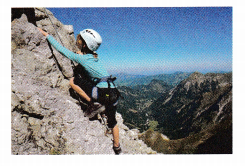
Draw a polygon Misty could use.
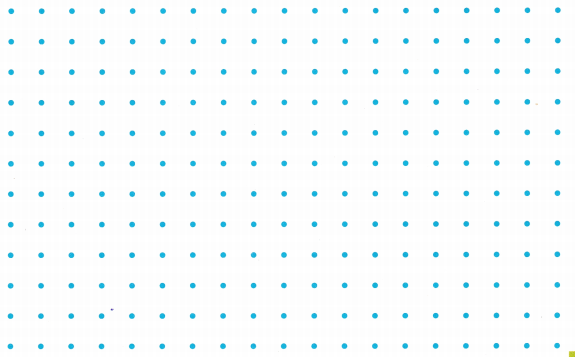
Answer:

A Right trapezoid is a trapezoid that has a pair of right angles, adjacent to each other. It is used while evaluating the area under the curve, under that trapezodial rule.
Turn and Talk What polygons could Misty use if the sign is a 4-sided polygon with at least 2 right angles? Explain.
Answer:
Mist can draw squares and rectangles.
More explanation about this:
A rectangle is a quadrilateral that has four sides, but has special attributes:
– All the angles of a rectangle are right angles.
– The opposite sides are equal in length or congruent. The top and the bottom, or bases, are the same length and the sides are the same length. The bases can be different lengths than the sides.
– The opposite sides are parallel to each other.
– They have two lines of symmetry; vertical and horizontal.

A square is really just a special kind of rectangle. A square is a special rectangle where all the sides are congruent. It has all the same attributes as a rectangle.
some properties of square and rectangle:
– All four sides are equal in length.
– All the internal angles of a square are 90°.
– The opposite sides of a square are parallel to each other.
– The diagonals of a square are equal in length and they bisect each other.
– The opposite sides of a rectangle are equal and parallel to each other.
– All the internal angles of a rectangle are 90°.
– The opposite angles of a rectangle are equal, hence, we also call it a parallelogram.
– The diagonals of a rectangle are of the same length and bisect each other.
Build Understanding
Question 1.
How can you use attributes to name and identify quadrilaterals? Circle all the attributes the shapes share.
A. 4 sides 4 angles 4 right angles
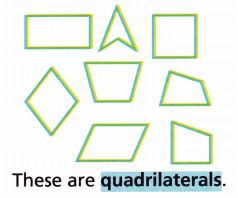
2 pairs of opposite sides of equal length
4 sides of equal length
At least 1 pair of parallel sides
2 pairs of parallel sides
Answer:
We would like to classify quadrilaterals according to which of the following attributes they share: one set of parallel sides, two sets of parallel sides, four right angles, all equal side lengths. Some quadrilaterals have just one set of parallel sides, and these are called trapezoids. Some quadrilaterals have two sets of parallel sides.
B. 4 sides 4 angles 4 right angles
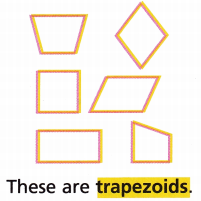
2 pairs of opposite sides of equal length
4 sides of equal length
At least 1 pair of parallel sides
2 pairs of parallel sides
Answer:
A trapezoid is a polygon that has only one pair of parallel sides. These parallel sides are also called parallel bases of trapezoid. The other two sides of trapezoids are non-parallel and called legs of trapezoids.
C. 4 sides 4 angles 4 right angles

2 pairs of opposite sides of equal length
4 sides of equal length
At least 1 pair of parallel sides
2 pairs of parallel sides
Answer:
The four properties of parallelograms are that firstly, opposite sides are congruent (AB = DC). Then, opposite angles are congruent (D = B). Moreover, if one angle is right then automatically all the other angles are right.

Turn and Talk A trapezoid can also be defined as a quadrilateral that has exactly 1 pair of parallel sides. Shade all the shapes above that match this definition. Describe these shapes.
Answer:
We cannot shade the shapes given above.
– A trapezoid is a polygon that has only one pair of parallel sides. These parallel sides are also called parallel bases of trapezoid. The other two sides of trapezoids are non-parallel and called legs of trapezoids.
– A trapezoid is a quadrilateral in which exactly one pair of opposite sides is parallel. If a quadrilateral has two pairs of parallel sides, it is not a trapezoid. Instead, it is called a parallelogram.
– A trapezoid is a quadrilateral with exactly one pair of parallel sides. Examples look like: An isosceles trapezoid is a trapezoid where the non-parallel sides are congruent. The third trapezoid above is an example of an isosceles trapezoid.
– A trapezoid is a four-sided shape with at least one set of parallel sides. The area of a trapezoid is the average of the bases times the height. Finally, a polygon is a closed, two-dimensional shape with many sides.
– A trapezoid is defined to be a quadrilateral that has exactly one pair of parallel sides. A quadrilateral with two pairs of parallel sides is called a parallelogram; a parallelogram with right angles is a rectangle.
In more clarification:
– If both pairs of the opposite sides are parallel in a trapezoid, it is considered a parallelogram.
– If both pairs of the opposite sides are parallel, all sides are of equal length, and at right angles to each other, then a trapezoid can be considered as a square.
– If both pairs of the opposite sides are parallel, their opposite sides are of equal length and at right angles to each other, then a trapezoid can be considered as a rectangle.
D. 4 sides 4 angles 4 right angles
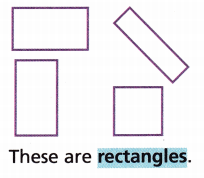
2 pairs of opposite sides of equal length
4 sides of equal length
At least 1 pair of parallel sides
2 pairs of parallel sides
Answer:
All of the figures have 4 sides and 4 vertices with opposite sides parallel and congruent. They have four right angles, so they also have perpendicular line segments.
E. 4 sides 4 angles 4 right angles
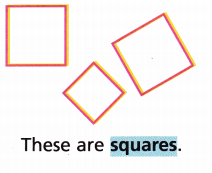
2 pairs of opposite sides of equal length
4 sides of equal length
At least 1 pair of parallel sides
2 pairs of parallel sides
Answer:
4 sides of equal length; 2 pairs of parallel sides.
The opposite sides of a square are both parallel and equal in length. All four angles of a square are equal (each being 360°/4 = 90°, a right angle). All four sides of a square are equal. The diagonals of a square are equal.
F. 4 sides 4 angles 4 right angles
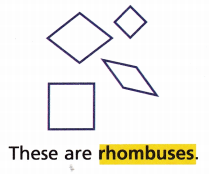
2 pairs of opposite sides of equal length
4 sides of equal length
At least 1 pair of parallel sides
2 pairs of parallel sides
Answer:
Square and Rhombus Similarities All sides of a square are equal in length. Similar to the square, all the sides of a rhombus are also of equal length. Opposite sides are parallel to each other. The opposite sides of a rhombus are also parallel to each other.
Check Understanding
Question 1.
Write the letters that match the shape.
Define a trapezoid as a quadrilateral that has at least 1 pair of parallel sides.

Rectangle ________
Rhombus ____________

Quadrilateral ____________
Parallelogram ____________

Trapezoid ___________
Square ____________
Answer:
Rectangle: A rectangle is not a trapezoid. This is because rectangles must have two pairs of parallel sides. On the other hand, a trapezoid has only one pair of parallel sides thus making a rectangle, not a trapezoid, and vice versa.
Every rhombus is a parallelogram and a trapezoid.
The parallelogram is a trapezoid, but not every trapezoid is a parallelogram (for example a right trapezoid is not a parallelogram because it has only one pair of parallel sides)
On Your Own
Question 2.
Reason Max sees a polygon in his classroom. This polygon has 4 sides and 4 angles. All the angles are right angles.
Define a trapezoid as a quadrilateral that has at least 1 pair of parallel sides.
A. Circle all the shapes the polygon could be.
rectangle
rhombus
triangle
hexagon
square
trapezoid
Answer:
4 sides and 4 right angles mean:
a square is a two-dimensional plane figure with four equal sides and all four angles are equal to 90 degrees. The properties of the rectangle are somewhat similar to a square, but the difference between the two is, a rectangle has only its opposite sides equal. Therefore, a rectangle is called a square only if all its four sides are of equal length.
Square is a regular quadrilateral, which has all four sides of equal length and all four angles are also equal. The angles of the square are at right-angle or equal to 90-degrees. Also, the diagonals of the square are equal and bisect each other at 90 degrees.
A Rectangle is a four sided-polygon, having all the internal angles equal to 90 degrees. The two sides at each corner or vertex, meet at right angles. The opposite sides of the rectangle are equal in length which makes it different from a square.

B. What additional attribute would make the polygon a square?
Answer:

– A square has four sides of equal length, four equivalent inner angle measurements, has 2 pairs of parallel sides with the opposite sides being equal in length, has two diagonals that are equal in length and make 90-degree angles with each other, as well as 45-degree angles with the sides.
– The side lengths of the square are measured by a, and they are all equal. Angles A, B, C, and D all form 90 degree angles. Lines DB and AC are diagonals that are equal in length, and they form four 90 degree angles at their intersection. They also make eight 45 degree angles on the corners of the square.
Circle all the words that describe the quadrilateral.
Question 3.

rectangle
rhombus
square
quadrilateral
Answer:


A quadrilateral is a closed shape and a type of polygon that has four sides, four vertices and four angles. It is formed by joining four non-collinear points. The sum of interior angles of quadrilaterals is always equal to 360 degrees.
Square properties:
– All the sides of the square are of equal measure
– The sides are parallel to each other
– All the interior angles of a square are at 90 degrees (i.e., right angle)
– The diagonals of a square perpendicular bisect each other
Rectangle properties:
– The opposite sides of a rectangle are of equal length
– The opposite sides are parallel to each other
– All the interior angles of a rectangle are 90 degrees.
– The diagonals of a rectangle bisect each other.
Rhombus properties:
– All the four sides of a rhombus are of the same measure
– The opposite sides of the rhombus are parallel to each other
– The opposite angles are of the same measure
– The sum of any two adjacent angles of a rhombus is equal to 180 degrees
– The diagonals perpendicularly bisect each other
Question 4.

parallelogram
rectangle
square
rhombus
Answer:

Both rectangles and parallelograms are quadrilaterals, which means that they are polygons with four sides.
A parallelogram is a quadrilateral that has:
– Two pairs of parallel sides
– Two pairs of opposite sides that are congruent
A rectangle is a quadrilateral that has:
– Four right angles
– Two pairs of opposite sides that are congruent
Question 5.

parallelogram
trapezoid
square
rectangle
Answer:
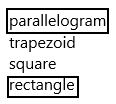
A trapezoid is a parallelogram if both pairs of its opposite sides are parallel. A trapezoid can be a rectangle if both pairs of its opposite sides are parallel; its opposite sides are of equal length and are at right angles to each other.
Reason Write all or some to complete the sentences.
Question 6.
___________ the sides of a square equal in length.
Answer: All the sides of a square are in equal length.
Square is a regular quadrilateral, which has all four sides of equal length and all four angles are also equal. The angles of the square are at right-angle or equal to 90-degrees. Also, the diagonals of the square are equal and bisect each other at 90 degrees.
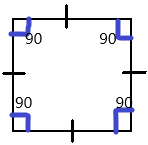
Properties:
– All four interior angles are equal to 90°
– All four sides of the square are congruent or equal to each other
– The opposite sides of the square are parallel to each other
– The diagonals of the square bisect each other at 90°
– The two diagonals of the square are equal to each other
– The square has 4 vertices and 4 sides
Question 7.
________ are rhombuses are squares.
Answer: some rhombus is squares.
If a rhombus has all its internal angles equal to 90 degrees, then that rhombus can be called a square. Therefore, we can conclude that some rhombuses are squares.
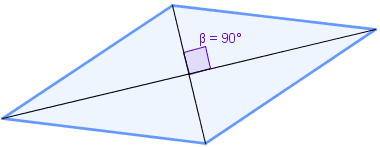
Question 8.
_________ sides of a rectangle are of equal length.
Answer: some sides of a rectangle are of equal length.
A Rectangle is a four sided-polygon, having all the internal angles equal to 90 degrees. The two sides at each corner or vertex, meet at right angles. The opposite sides of the rectangle are equal in length which makes it different from a square.
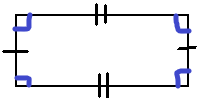
Properties:
– It has four sides and four vertices
– Each vertex has an angle equal to 90 degrees
– The opposite sides are equal and parallel
– Diagonals bisect each other
– Perimeter is equal to twice the sum of its length and breadth
– The area is equal to the product of its length and breadth
– It’s a parallelogram with four right angles.
– Sum of all interior angles equal to 360 degrees
Question 9.
__________ squares are rectangles.
Answer: All squares are rectangles.
All squares are rectangles because all squares have 4 right angles.
I’m in a Learning Mindset!
What strategies for describing quadrilaterals did I share with my partner?
Answer: